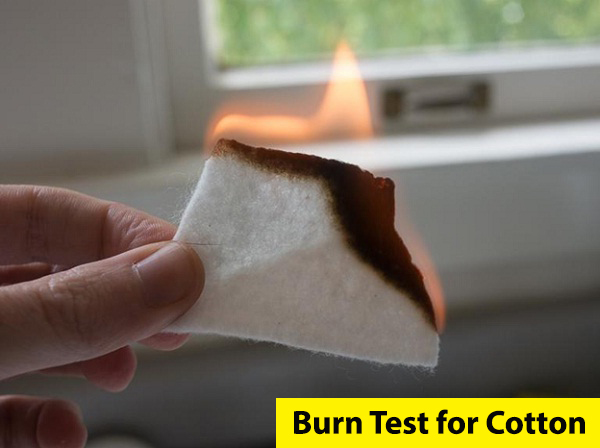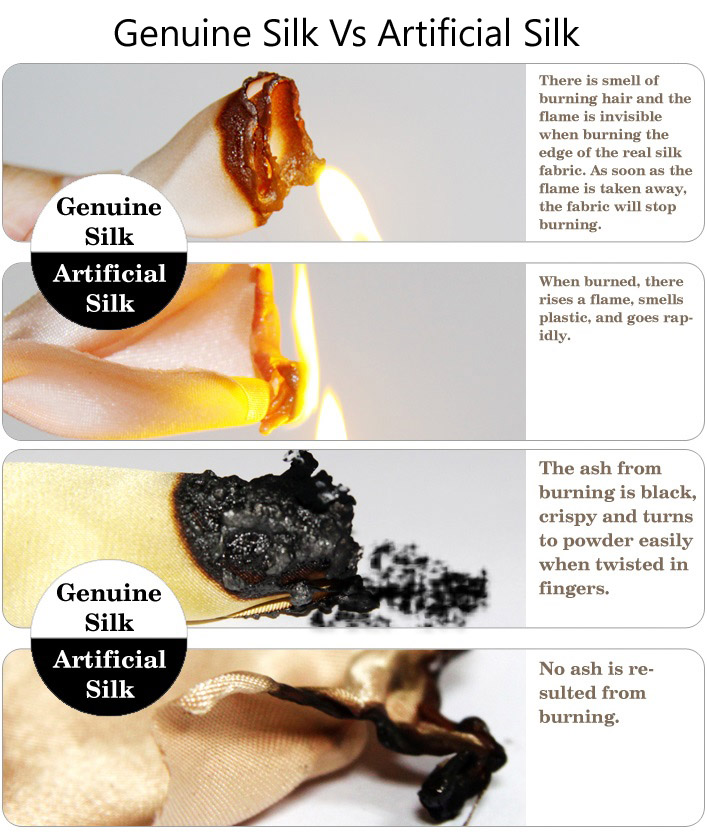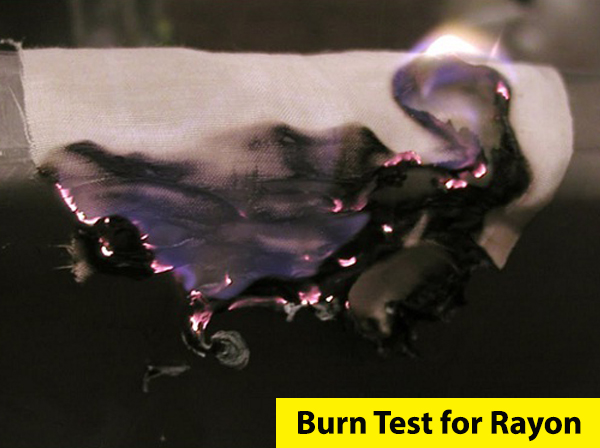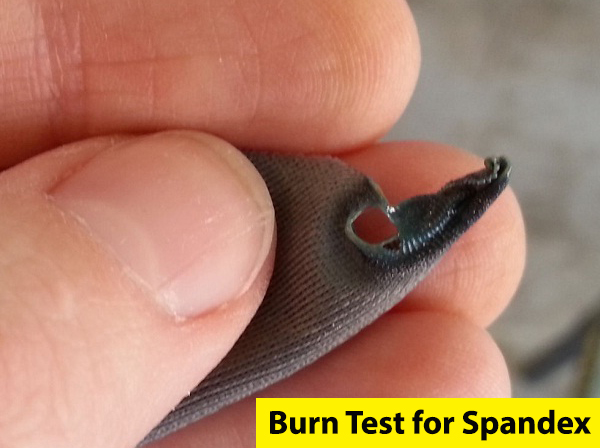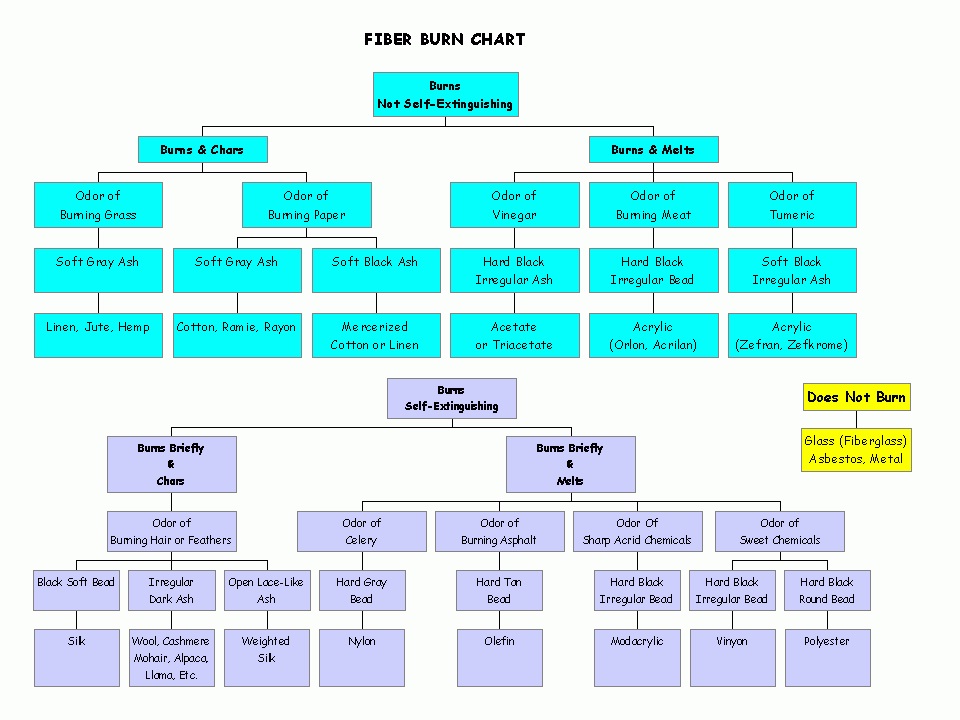When it comes staying ahead in style, fabrics definitely play a significant role. With different kinds of fabrics, including cotton, linen, rayon and georgette, it becomes primarily necessary to understand and identify one fabric from the other, especially if you want to make your presence in the occasion a lasting one. In fact, not just for the end-consumers, identification of fabrics is equally important for quilters, who need to sew with only 100% cotton fabrics.
Irrespective if you are a quilter or a simple buyer, knowing to identify fabrics is truly important since that can help you charting out proper care instructions. In case you too want to get acquainted with this identification issue, proceed to read below.
The Burn Test of different Fabrics
Warning- This test should be done only if you are a skilled burner or you are assisted by one. Also make sure that you are accompanied with a bucket of water. Get a bucket that is made of either metal or something non-plastic.
Burn Test is one of the most common and well-known tests conducted by several factories and quilters to identify one fabric from the other.
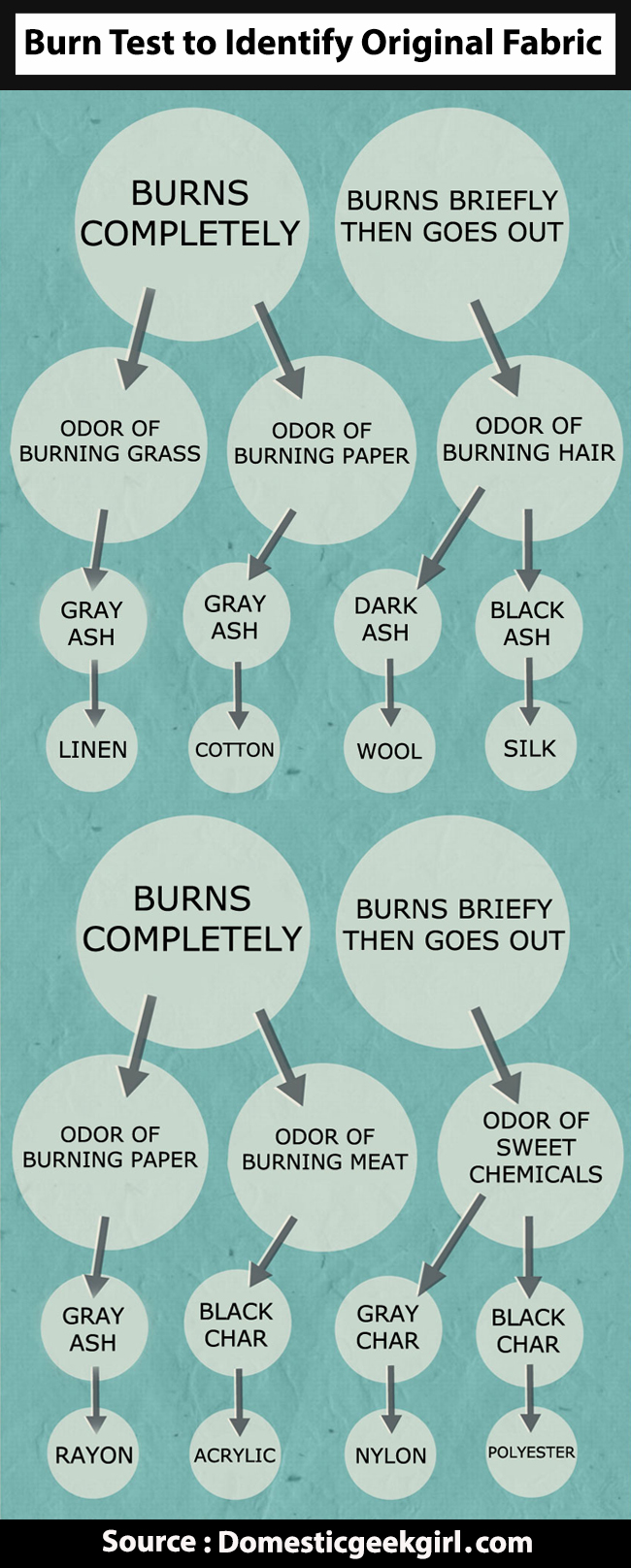
To conduct a burn test you would require:
- The respective fabric.
- A flame-proof container like ash-tray and a metal container like sink where the water can be quite handy.
- Long matches or any other source of flame.
- A non-plastic pitcher or bucket, in case you don’t have sink.
- Long tweezers or even a simple hemostat.
Procedure
- Cut around 2” squares of each fabric.
- Gently place one piece of your respective fabric in a fireproof container while igniting the other corner.
Now, while it burns, pay attention to your burnt fabric odor. Here’s how you can identify fabrics with the help of smell.
Cotton Burn Test
The smell of burning paper and the presence of an afterglow, after it’s burnt, indicates that the burnt fabric is cotton.
- Flame: Burning Quickly, orange/yellow flame
- Odor: paper burning like odor
- Residue: Light and feathery gray ash, ash is black if mercerized
- Approaching Flame: Does not shrink away, Scorches, ignites quickly
- Removed From Flame: Continues to burn rapidly has afterglow
- After burning it’s converting into ashes gray or black powder
Silk Burn Test
The smell resembling the burning of either feathers or hairs indicate that the burnt fabric is either wool or has silk fibers. However, silk doesn’t burn as easily as wool does.
- Flame: When we burn silk it’s create orange flame, burns slowly, sputters.
- Odor: Hair burning like odor
- Action: Burns
- Residue: Gray and white powder Round shiny black bead easy to crush
- Approaching Flame: smolder and curls away from flame
- Removed From Flame: burn with difficulty, cease to flame
- After burning it’s converting black ashes
Linen Burn Test
Linen tends to produce similar results as that of cotton. However, unlike cotton, it burns slowly.
- Flame: Yellow and orange and linen is easily extinguished like candle the ashes very brittle Burns less quickly than cotton yellow flame
- Odor: Grass burning like odor
- Residue: Light and feathery gray ash
- Approaching Flame: Scorches, ignites quickly
- Removed From Flame: Continues to burn
Rayon Burn Test
Rayon produces odour similar to that of cotton. However, it keeps on burning even when the flame is removed. It also doesn’t have an afterglow.
- Flame: Yellow orange flame, burns evenly, does not smolder, no smoke Burn more quickly compare to cotton
- Odor: The burning smell like a burning leaves or paper
- Residue: Light and feathery gray ash
- Approaching Flame: Scorches, ignite quickly
- Removed From Flame: Continues to burn rapidly has no afterglow
- Leaves only a slight ash
Spandex Fabric Burn Test
Spandex, like acrylic, too fuses and generally shrinks away from an approaching flame. In the flames, it melts and burns, leaving behind sharp bitter odour with soft, sticky and gummy ashes.
Wool Fabric Burn Test
- Flame: Burning slowly with small flickering flame, sizzle and curl, orange /Sputters flame
- Odor: hair burning like odor
- Action: Burns
- Residue: Black bead of ash which crushes easily when cold Crisp, dark ash, round irregular bead, easy to crush
- Approaching Flame: Smolder and curls away from flame, ignites slowly
- Removed From Flame: Ceases to flame
- After burning it’s converting into black ashes /crumbles
Polyester Fabric Burn Test
- Flame: When polyester burning its creating orange, sputtering and drips. Melts and burns slowly.
- Odor: Chemical, Sweet and fruity odor
- Action: Melts
- Residue: Hard light colored round bead black bead won’t crush
- Approaching Flame: Fuses and shrink away from flame
- Removed From Flame: Burns with difficulty
- The extinguish ashes is hard
Nylon Fabric Burn Test
- Flame: When we burn nylon its create blue flame Melts then burn slowly
- Odor: Plastic Burning like odor
- Action: Melts
- Residue: Hard light colored round bead, grayish, wont crush
- Approaching Flame: Fuses (melts without burning )and shrink away from flame.
- Removed From Flame: Flame cease and dies out
- After burning it convert round, black bead ashes.
Acrylic Fabric Burn Test
- Flame: When acrylic burn it’s create white-orange flame and black
- Odor: Chemical, smoke Burnt meat like odor or like smell
- Action: Melts
- Residue: Hard, irregular shaped bead black, won’t crush
- In Flame: Flames rapidly, sputters and melts
- Approaching Flame: fuses and shrink away from flame
- Removed From Flame: Continues to burn and melt
- After burning convert into hard ashes
If the smoke has darkish plume with a smell resembling that of chemicals or plastic, it can probably mean that fabric is either cotton or polyester blend.
A Video Guide to burn test of Polyester-Cotton Blend:
After the fabric is burnt, it’s time to examine the ashes, as that too can help identifying the fabric.
- If the remnants are black and brittle, and get crushed between your fingers, the burnt fabric can be probably wool.
- If the lumps are hard enough, it can indicate clumps of burnt or melted synthetic fibers.
Here’s an additional step.
- Unravel a clump or clumps of threads from any of your respective swatch fabric.
- Now, hold the clump, over your respective flameproof container, with tweezers.
- Next is to move moderate small flame exactly towards this clump. Now, you have to notice the following.
- If the fibers ignite when the flame gradually draws near, the fabric is cotton.
- If the fibers keep curling away from the applied heat and gradually tend to melt, it is probably because the clump had synthetic fibers.
Apart from cotton, wool and silk, the burn test can also help determine other fabrics like the following.
- Nylon includes an odour that resembles celery. It melts without even burning and leaves behind hard, round and grayish uncrushable beads.
- Acetate fabric when approaching flames, fuses away from it it, while turning black. Blazing and burning quickly, these fabrics give an odor that resembles vinegar, while leaving behind irregular beaded hard black ash.
- Acrylic fabric when approaches flames fuses and gradually shrinks away from it. Sputtering and melting, it gives out a smell resembling that of chemicals. Its remnants are generally irregular, hard and uncrushable black beads.
Alternative Tips to identify Originality of different Fabrics
Cotton
1. A small water drop on a cotton fabric would generally remain whole before it sinks down.
2. Drop either oil or glycerine on the fabric. If it is cotton, it would remain opaque.
3. An unraveled cotton thread would be fuzzy and short along with lacking luster.
Linen
1. A small water drop on linen would spread and absorb quite quickly.
2. Dropping oil or glycerine would make linen transparent, if you hold it up to the light.
3. Unraveled linen thread fibers are generally longer and have more luster as compared to cotton.
4. An ink drop would generally spread evenly, in fact rapidly, if the fabric is pure linen. If it’s mixed with cotton, it would spread unevenly.
Recommended Read: 13 Master Tricks to identify Original Leather Bag
Wool
- Caustic soda is the key for identifying wool. Using caustic soda on wool would make the fabric dissolve while leaving a typical blend.
- Unraveled wool thread would be generally hairy as well as springy.
Silk
An unraveled thread of silk would appear more lustrous than cotton and even wool.
Rayon
- When wet, rayon generally feels gummy, while its fiber tends to weaken down. Rayon fabrics also tend to dry quite slowly as compared to the other remaining fabrics.
- An raveled rayon thread is generally lustrous, slippery and lastly, quite cool than the other fibers.
- If you scratch with your nails, rayon threads would slip and would separate quite easier than the other fabrics.
- When rayon fibers start ageing, they remain bright white. On the other hand, other natural fabrics tend to turn yellowish.
Here’s a video showing burn test of popular fabrics including cotton, wool, silk, rayon, polyester, nylon, acrylic, and acetate.
So, these were some of the most common tests and tips that can help you identifying different kinds of fabrics. If you know more tests or have some more tests that can help in the identification of fabrics, don’t forget to comment below.
Image Source: 1, 2, 3, 4, 5, 6, 7, 8, 9, 10, 11, 12, 13, 14
Charles Brown
Latest posts by Charles Brown (see all)
- 8 Most Coveted Luxury Fashion Pieces of All Time - November 1, 2023
- Where Can I Cash a Third-Party Check? - March 28, 2023
- Check Cashing at Walmart: Cashing Limit, Fees, Hours & Stores Guide - March 21, 2023
